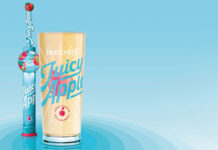
Gin continues to prove a popular ingredient for classics as well as unusual serves
RECENT years have seen an explosion in the gin category, as long-established mainstream brands have been joined by a growing number of small-batch spirits.
And in the on-trade, the spirit’s popularity has coincided with the country’s continued thirst for cocktails, from classic gin-based drinks like the Tom Collins to originals created for and distinct to a particular outlet.
“Gin has a versatility and character bartenders and consumers are more focused on than ever,” said Ibolya Bakos-Tonner, global brand manager for Caorunn gin at International Beverage Holdings.
“Save for their varied histories, truly great gins offer a depth of character and taste which are very appealing for bartenders and consumers alike.
“As palates have become more sophisticated, and drinkers more discerning, the modern gin age is central to cocktail culture.”
When selecting the right cocktails for an outlet Bakos-Tonner said it is important operators “tailor their offer to suit the strengths and aspirations of the unit”.
A carefully considered list was also advised by Juliette Flanagan, category development manager at Diageo – parent company of the Gordon’s and Tanqueray brands.
“Choose a cocktail list that suits your style of outlet and the customers you attract,” said Flanagan.
“Outlets offering cocktails for the first time should choose a short, well thought-out list with no more than 12 classic and contemporary cocktails.
“Staff should then be trained to learn the recipes and deliver them perfectly every time.
“Confident staff will actively sell cocktails and enjoy making them.”
Alex Nicol, managing director of The Spencerfield Spirit Company, parent firm of Edinburgh Gin, said simplicity is key when it comes to cocktails.
“Unless they are an established cocktail bar, keep it simple, fresh and local,” said Nicol.
And he said that, similar to craft beer, the gin category has benefited from a growing interest in locally-sourced products.
“I can see many better quality outlets looking at making their own syrups and even their own mixers, tonic bases, etc.” he said. “The move towards locally-produced spirits is unstoppable and will only get stronger.
“I believe consumers are already getting involved in promoting their local craft spirits and beers – this will move to more demand for local mixers and other quality soft drinks which will probably be vitaminised and/or with exotic/local ingredients.”
Growing interest in local products isn’t the only trend expected to impact on gin orders during the colder months.
“Hot cocktails are currently more popular than last winter, so I would expect to see an increase in hot drinks on next winter’s menus,” said David Littlejohn, brand ambassador for NB Gin.
“Over the course of 2015, gin consumption is expected to increase again, along with craft beer.”
The bartending scene is notoriously fickle, with talented mixologists always on the lookout for what could be the next big thing. But drinks firms are confident gin will remain a popular choice on drinks lists throughout 2015.
“With consumers latching on to all things juniper, and exciting new craft distilleries opening every week, we see little sign of this trend abating,” said Pinkster gin director Will Holt.
“It’s a complex, versatile spirit and there’s potential to open up the category to new drinkers.”
[hr]
Edinburgh Gin Sour
Ingredients:
50ml Edinburgh Gin
25ml fresh pressed
lemon juice
12.5ml sugar syrup
25ml egg white (optional)
Method:
Add ingredients to the shaker, add ice then shake vigorously for 10-15 seconds, then pour into the glass. Garnish with a lemon wedge and a fresh cherry.

























